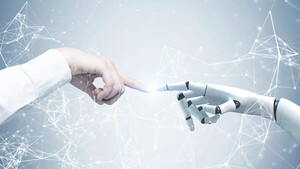In Europe, the patents of protein products manufactured using biotechnology started to expire in 2000, and more than 10 will have expired by the end of the decade, including patents for growth hormones, α-, β- and γ-interferon interferon, human insulins, epoetin alfa, interleukin 2, G-CSF, follitropin, streptokinase, and tissue plasminogen activator. As with traditional low-molecular-weight chemically derived pharmaceuticals, this allows the possibility of developing new and cheaper versions of these biopharmaceutical products. However, while the former products are relatively easy to manufacture, the latter ones are much more challenging to produce, for many reasons. Recombinant proteins are large molecules, which have a highly complex three-dimensional structure and are not synthesised in vitro, but produced and secreted by genetically modified cells. During this process, proteins can undergo posttranslational modifications, such as glycosylation, that lead to heterogeneity.
EMEA guidelines on biosimilars and clinical implications
Home/Guidelines
|
Posted 10/09/2009
 0
Post your comment
0
Post your comment
Manufacturing and formulation of protein products is thus highly complex, while the manufacturing process is critical to defining the characteristics of the final product ('the process is the product'). Biological medicinal products are usually much more difficult to characterise than chemically derived ones, and past experience has shown that seemingly minor differences can have important clinical consequences. For all these reasons, copies of biopharmaceuticals cannot be identical to the original product but, at best, similar. In Europe, this has been fully acknowledged by EMEA and is reflected by the fact that these products are named biosimilars, and not generics or biogenerics (in Japan and the USA they are called follow-on protein products, and in Canada subsequent entry biologics).
As a direct consequence, the approval process that is used for generic drugs cannot be applied to drugs claiming similarity to biopharmaceuticals. This has been recognised by EMEA’s Committee for Medicinal Products for Human Use, which has developed specific guidelines for similar biological medicinal products containing biotechnology-derived proteins as active substance. These guidelines, which were published in 2005 and 2006, include overarching guidelines, general guidelines on quality, nonclinical and clinical issues, and class-specific guidelines focusing on recombinant human erythropoietin, granulocyte colony-stimulating factor, human insulin, and growth hormone. Importantly, these guidelines state that “comparability studies will be needed to generate evidence substantiating the similar nature, in terms of quality, safety and efficacy”.
A review by Dr Jerome Rossert of Amgen specifically focuses on guidelines relating to recombinant human erythropoietin.
Source: Rossert, J. EMEA guidelines on biosimilars and their clinical implications. Kidney Blood Press Res. 2007;30(Suppl 1):13-7.
Policies & Legislation
ANVISA tackles 24-month backlog in biologicals post-registration petitions
US EO: delivering Most-Favored-Nation Prescription Drug Pricing to American patients
Most viewed articles
The best selling biotechnology drugs of 2008: the next biosimilars targets
Global biosimilars guideline development – EGA’s perspective
New guidance for biologicals in Pakistan and Hong Kong’s independent drug regulatory authority

Home/Guidelines Posted 20/10/2025
Canada poised to remove requirement for Phase III trials for biosimilars

Home/Guidelines Posted 22/07/2025
The best selling biotechnology drugs of 2008: the next biosimilars targets








Post your comment